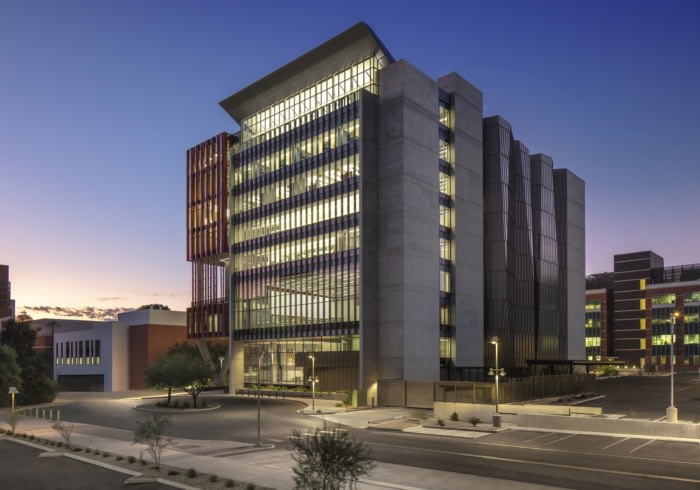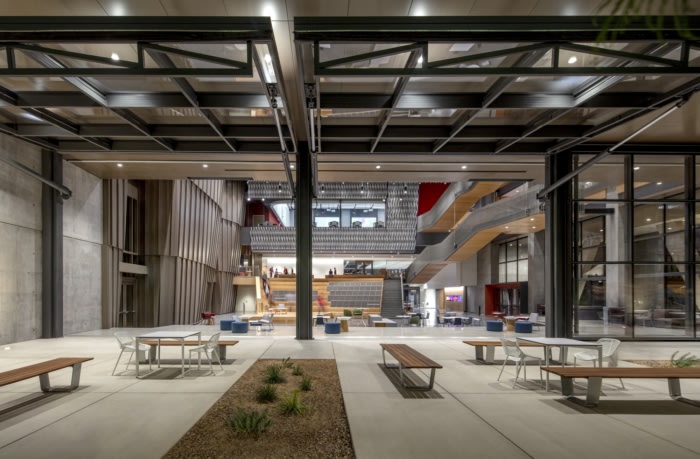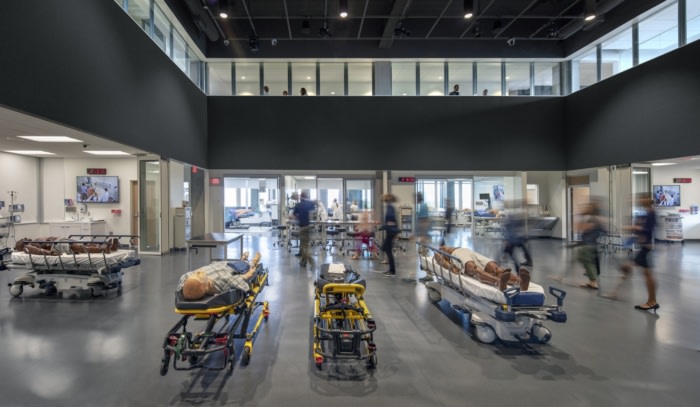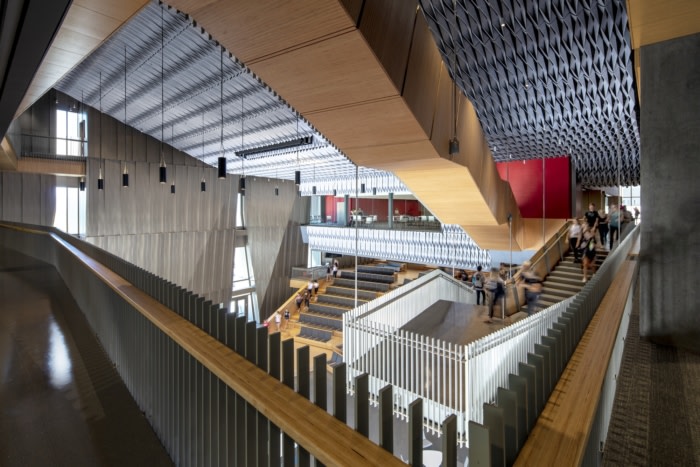University of Arizona in Tucson – Health Sciences Innovation Building
CO Architects completed the award-winning Health Sciences Innovation Building with cohesion to the existing University of Arizona in Tucson, Arizona.
Adding to its award roster for university health sciences buildings, CO Architects recently won a 2020 American Architecture Award for its work on the University of Arizona Health Sciences Innovation Building (HSIB). The honor was presented in the Schools and Universities category by The Chicago Athenaeum: Museum of Architecture and Design and The European Centre for Architecture Art Design and Urban Studies.
Located at the University of Arizona in Tucson, the 230,000‐square‐foot HSIB is a multidisciplinary medical and health‐sciences education facility. It supports the university’s Colleges of Medicine, Nursing, Pharmacy, and Public Health, as well as the Arizona Simulation Technology and Education Center. To connect the HSIB to the campus’ existing masonry brick aesthetic, CO Architects selected terracotta, a material that could be extruded and manipulated. The twisting in the terracotta is inspired by the local saguaro cactus’ self‐shading properties, and makes light and shadows change dynamically on the façade almost as if the building moves and changes from different angles. Visually appealing, the terracotta is hung on the façade’s curtainwall system, improving the building’s energy performance.
Facility highlights include the first‐floor, multi‐story “Forum.” This flexible event space serves the building’s departments, the university populace, and the outside community. The room opens to the campus through three glass hangar doors, expanding the space seamlessly and supporting events from 50 to 1,000 guests. Social/study terraces are carved into the building to provide shaded outdoor access to nature and extensive views. On the 7th Floor, a black box theater‐inspired “Simulation Deck” creates immersive simulation environments that mimic realistic, multi‐sensory experiences supplemented by a viewing gallery.
Architect: CO Architects
Photos: Bill Timmerman

















